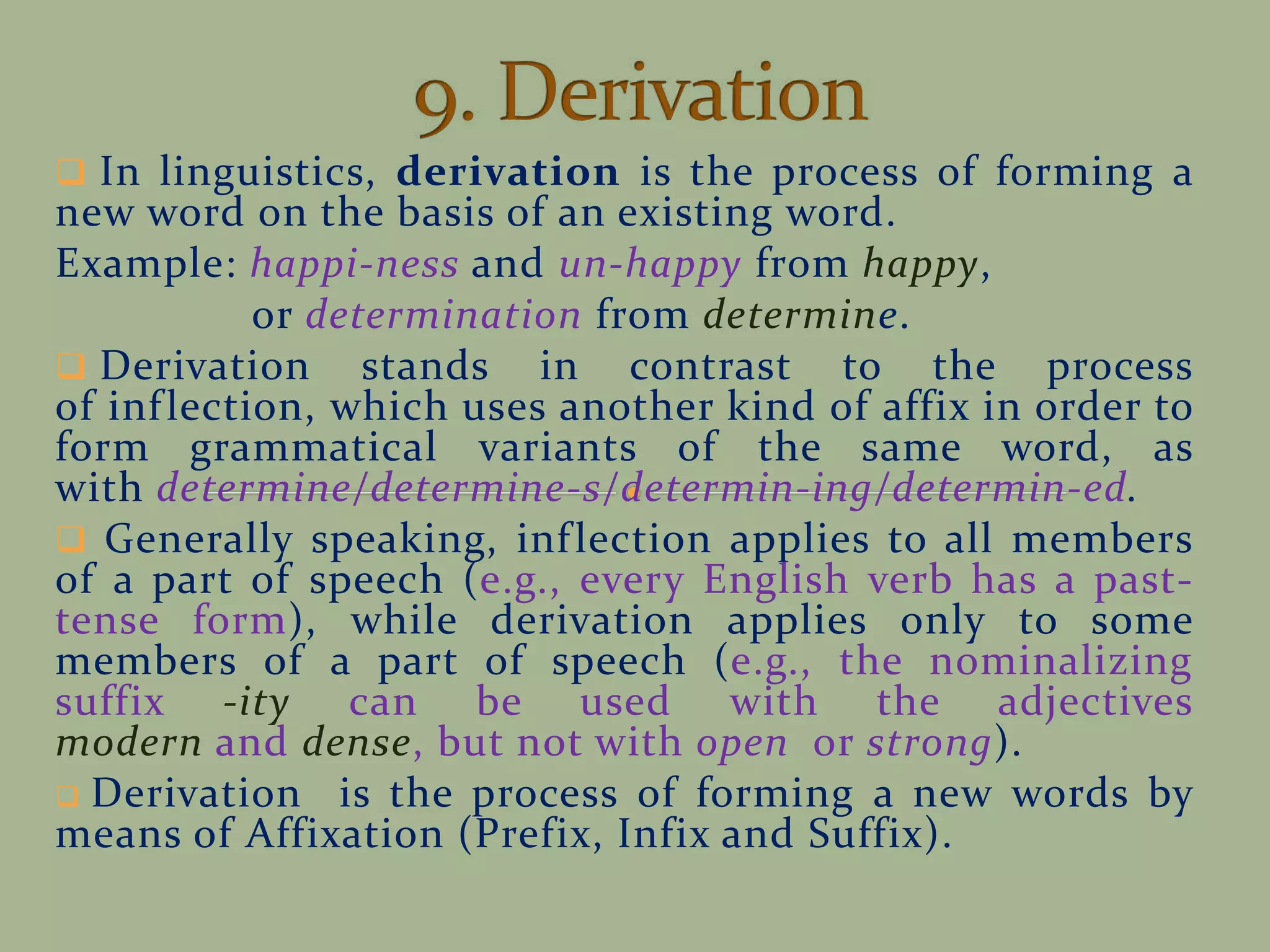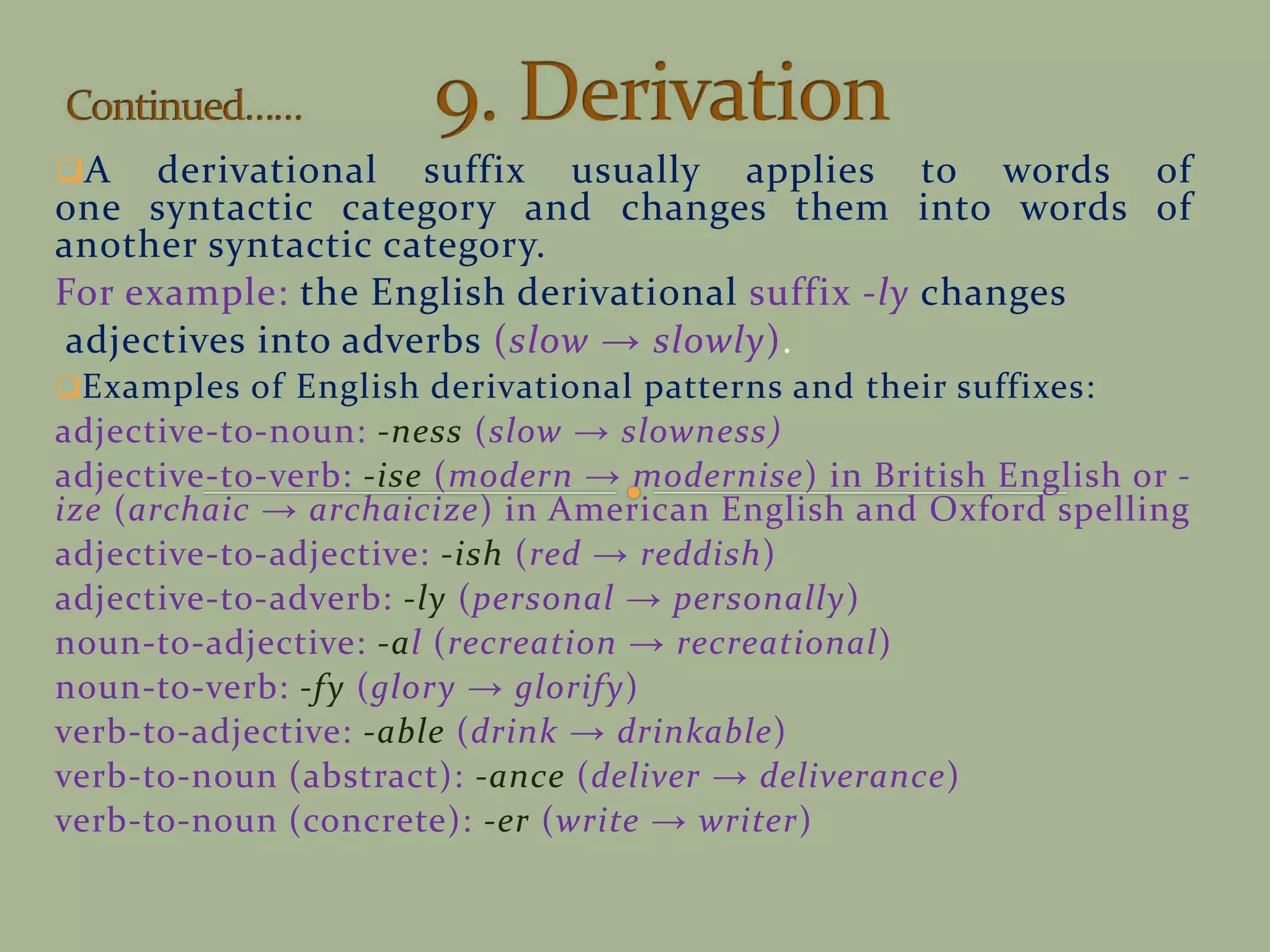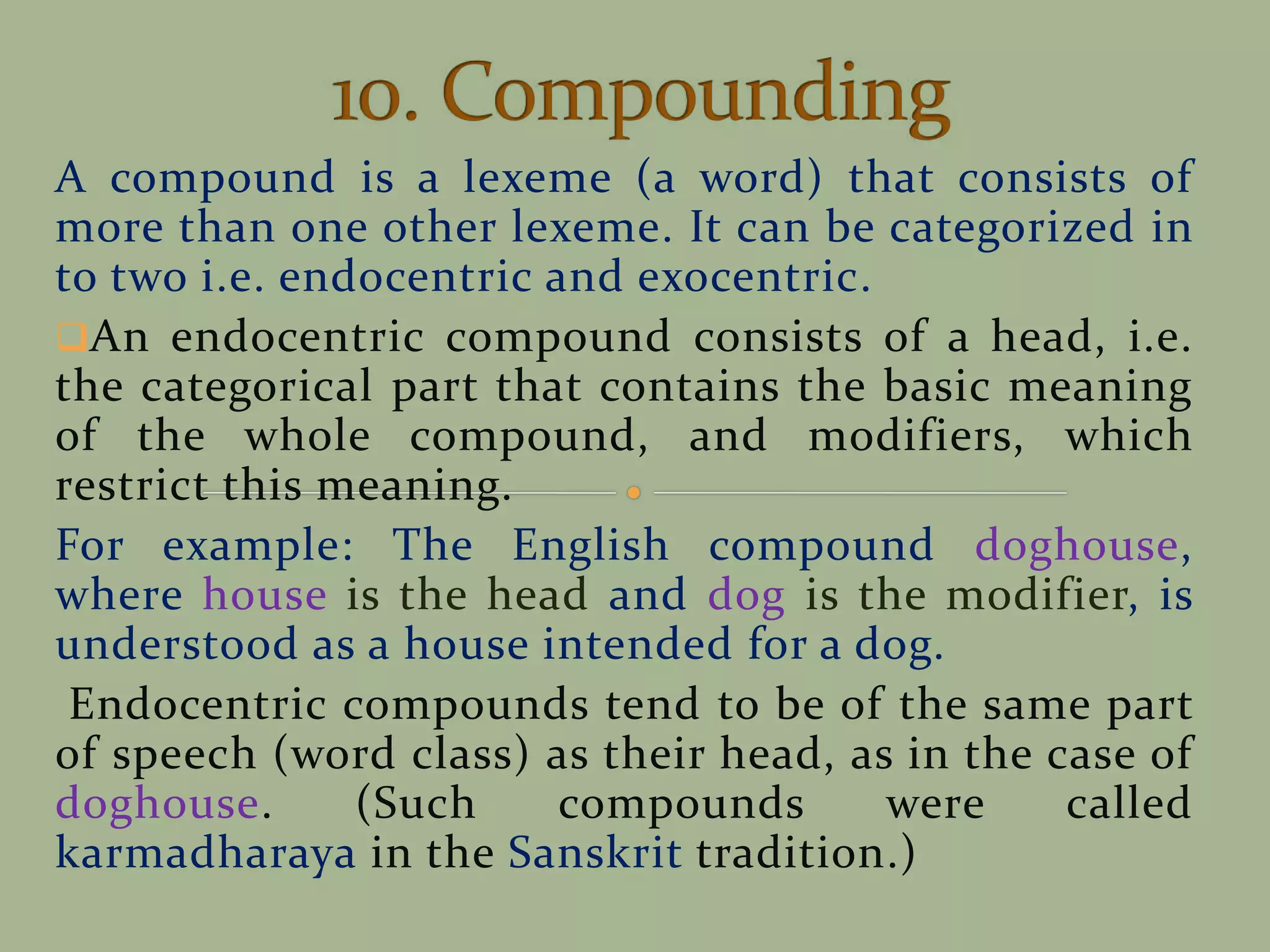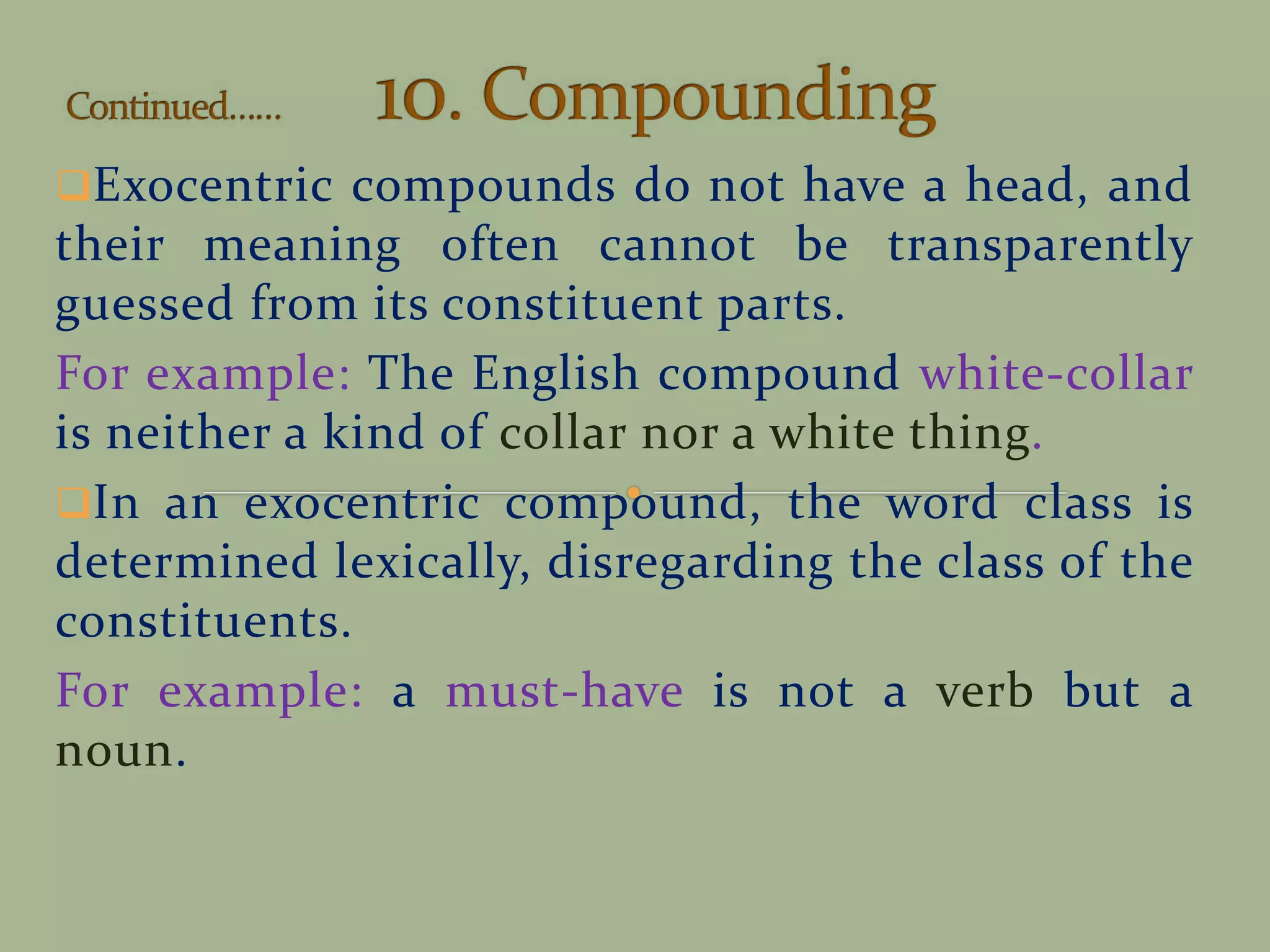This document discusses various word formation processes in the English language, including clipping, blending, acronyms and initialisms, back-formation, borrowing, coinage, reduplication, inflection, derivation, compounding, and the categorization of compounds. It provides examples for each process and discusses their linguistic characteristics and differences.
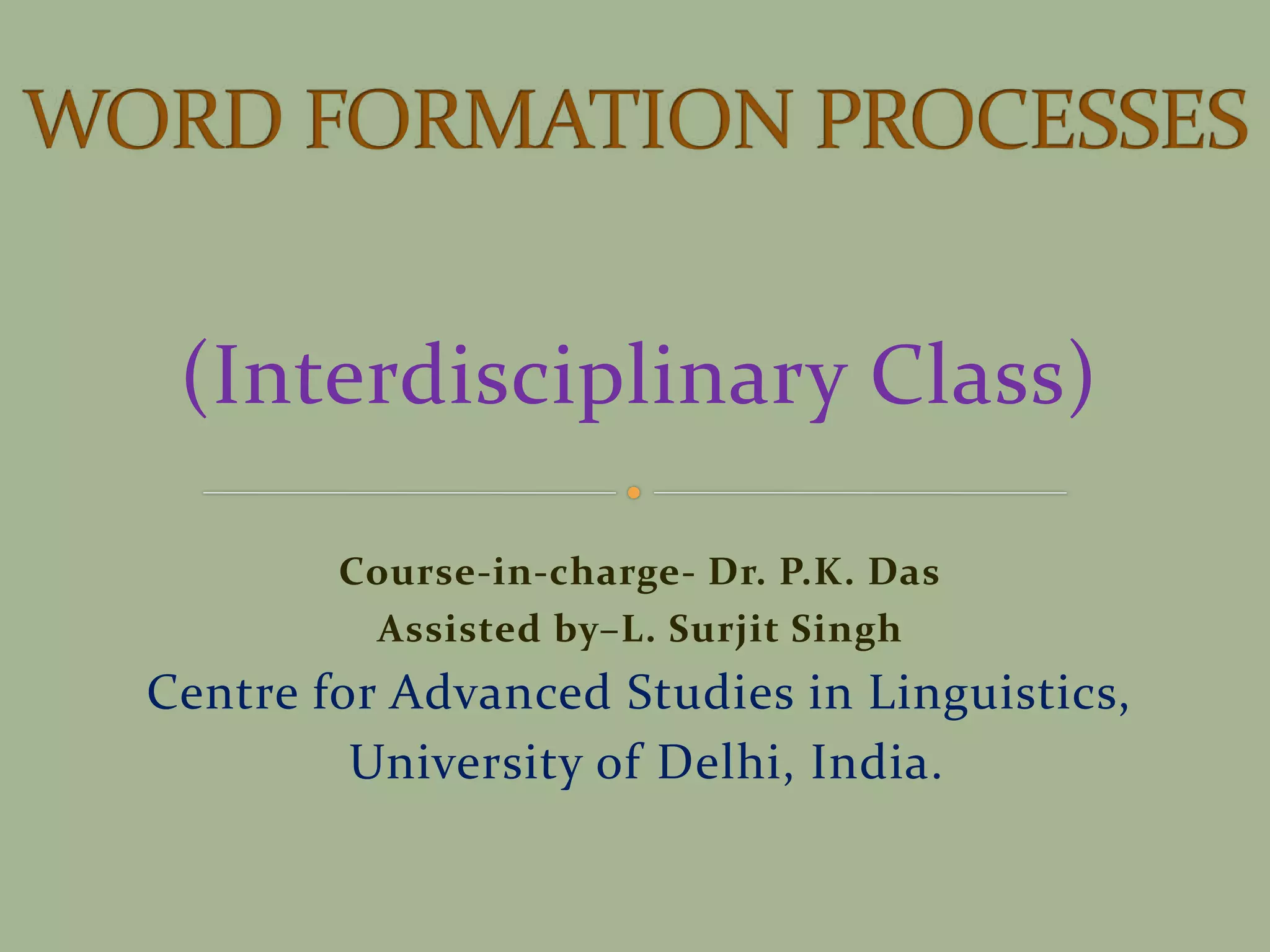
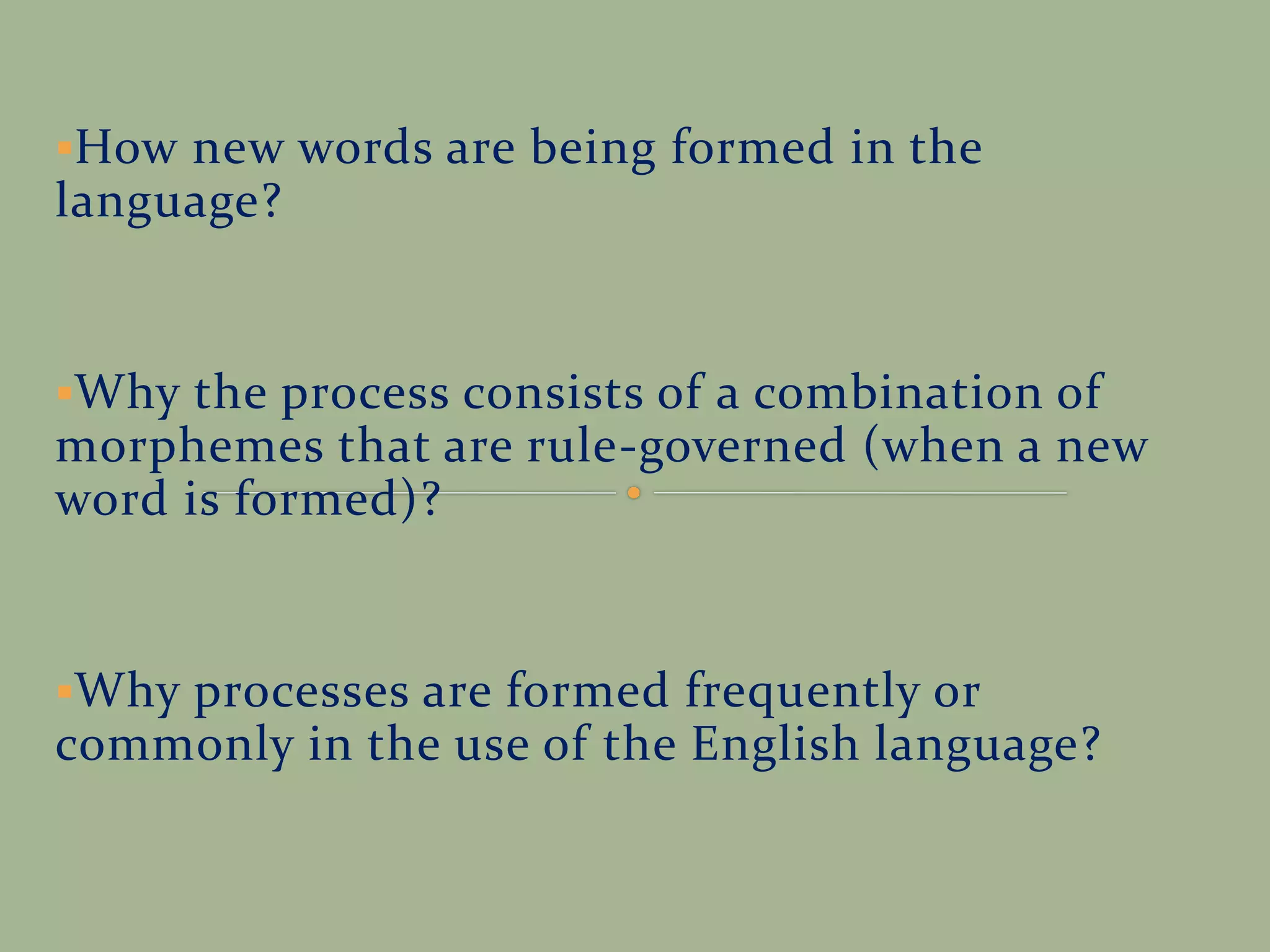

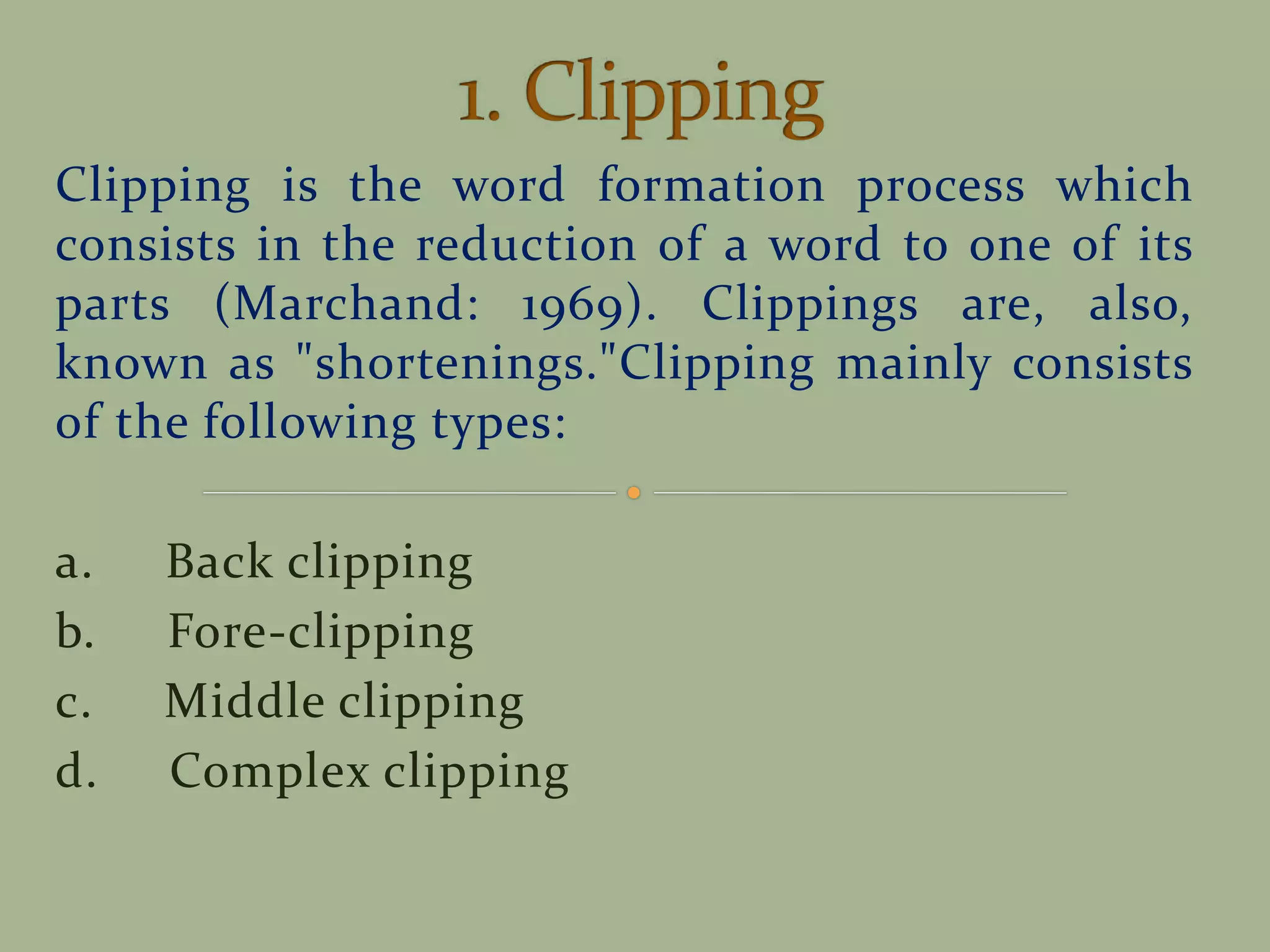
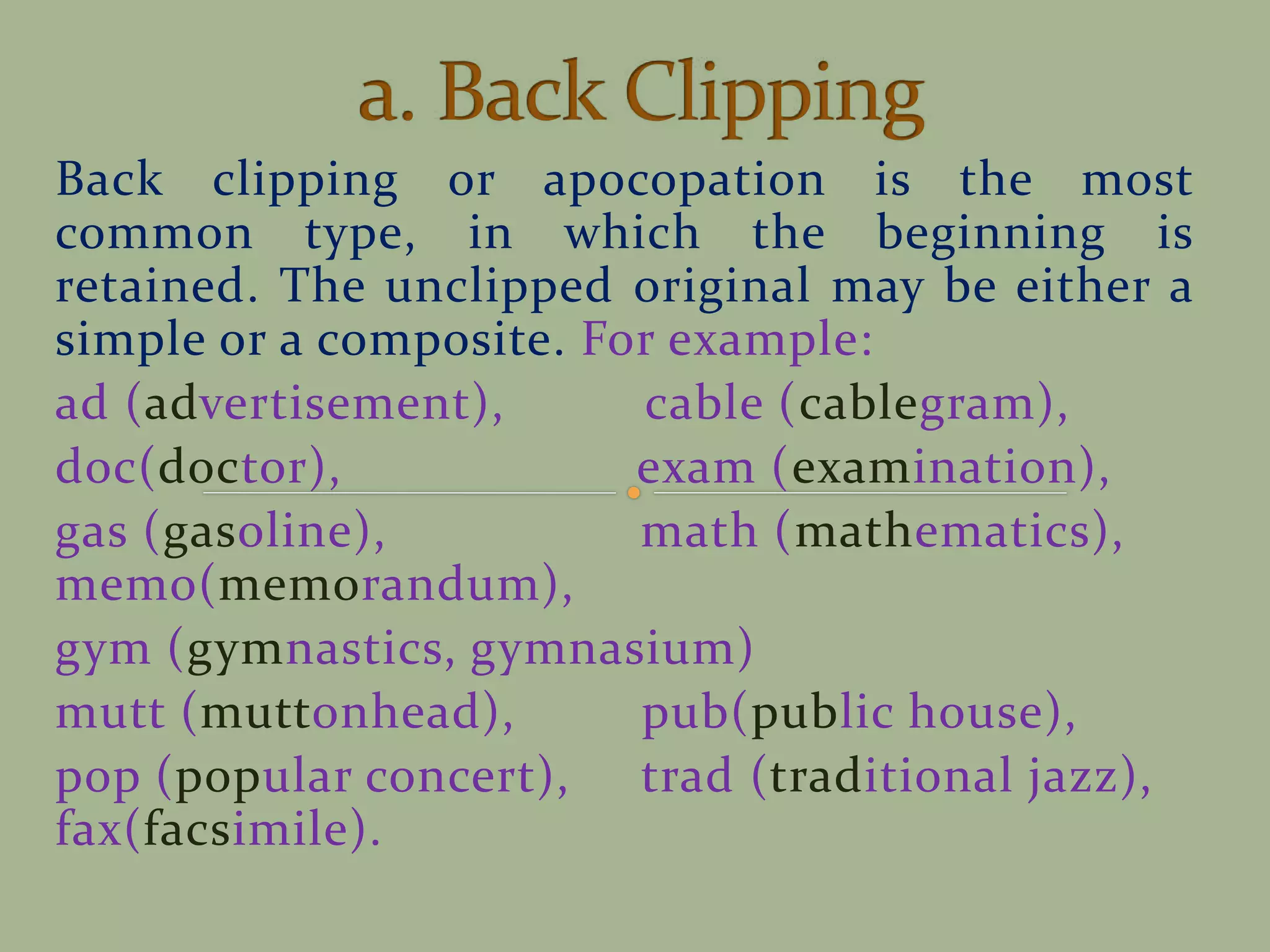

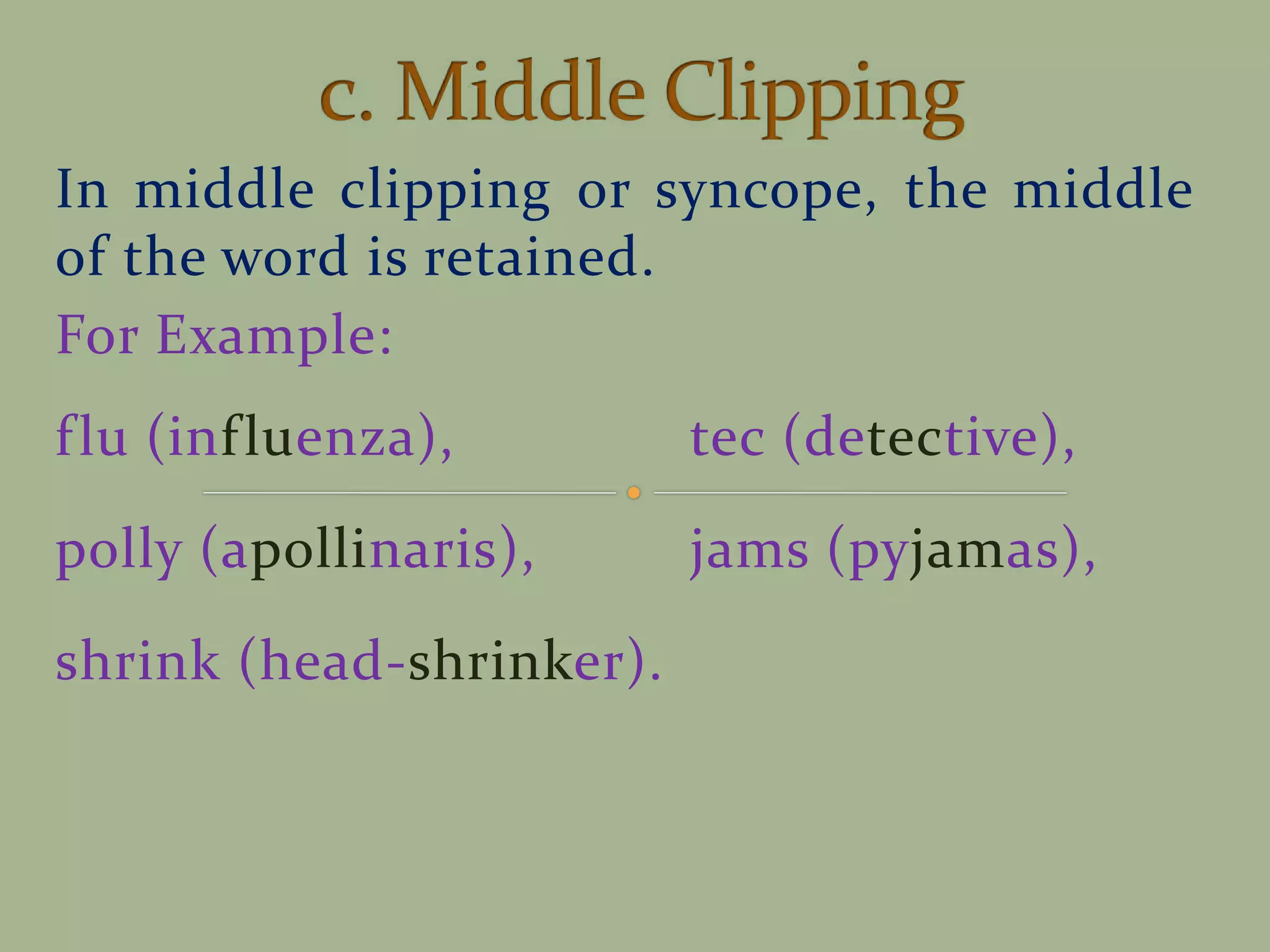
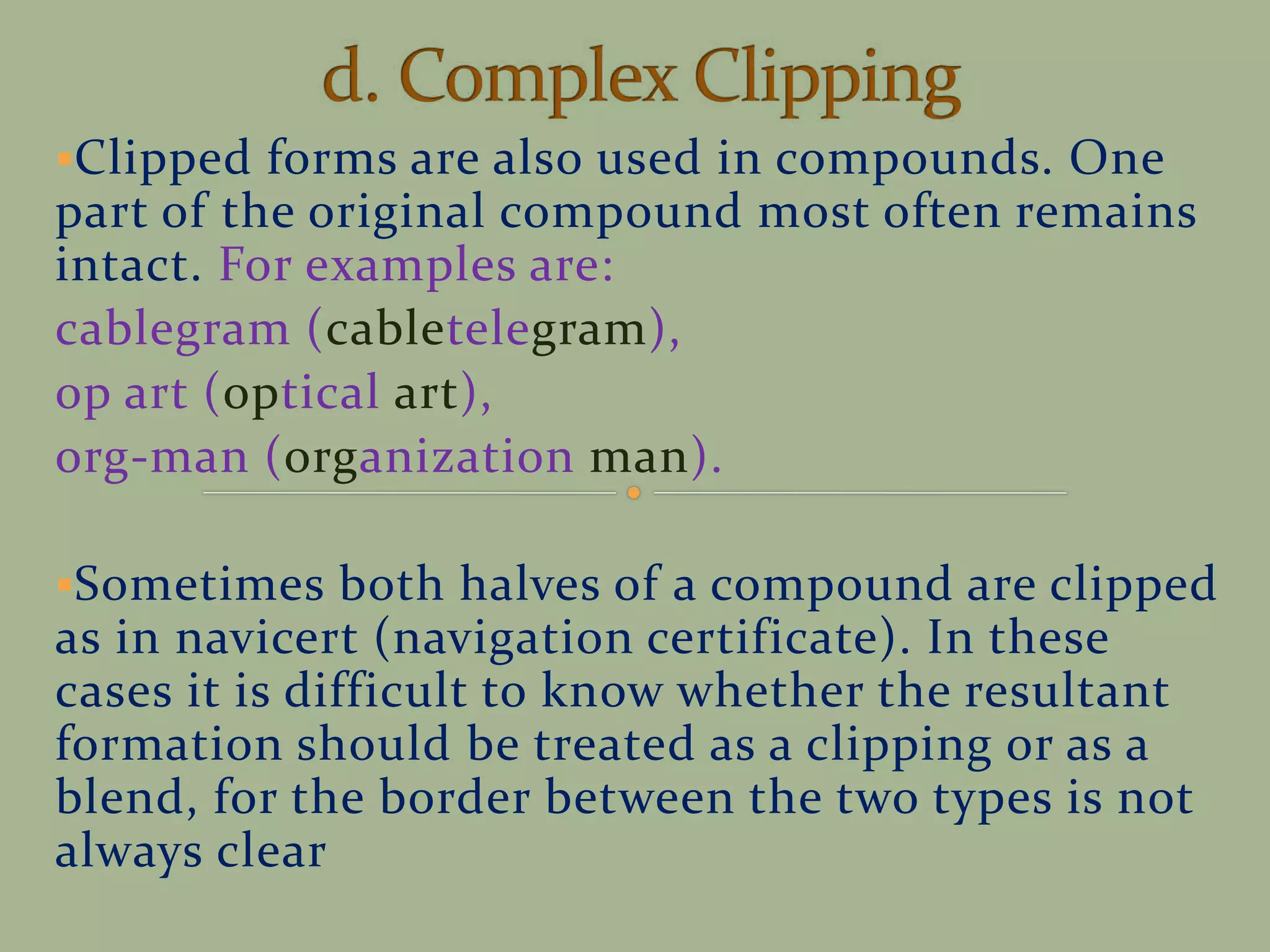
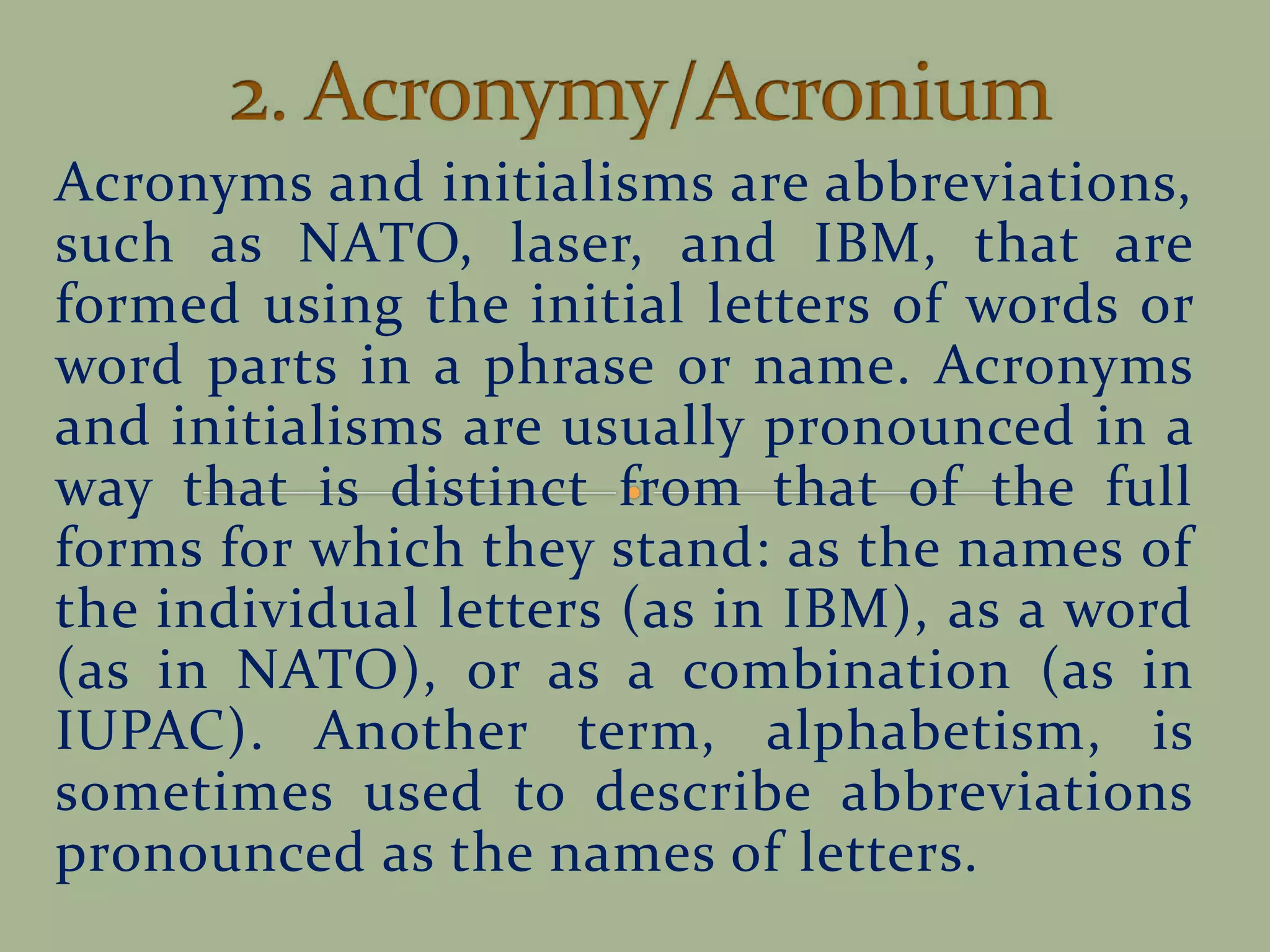
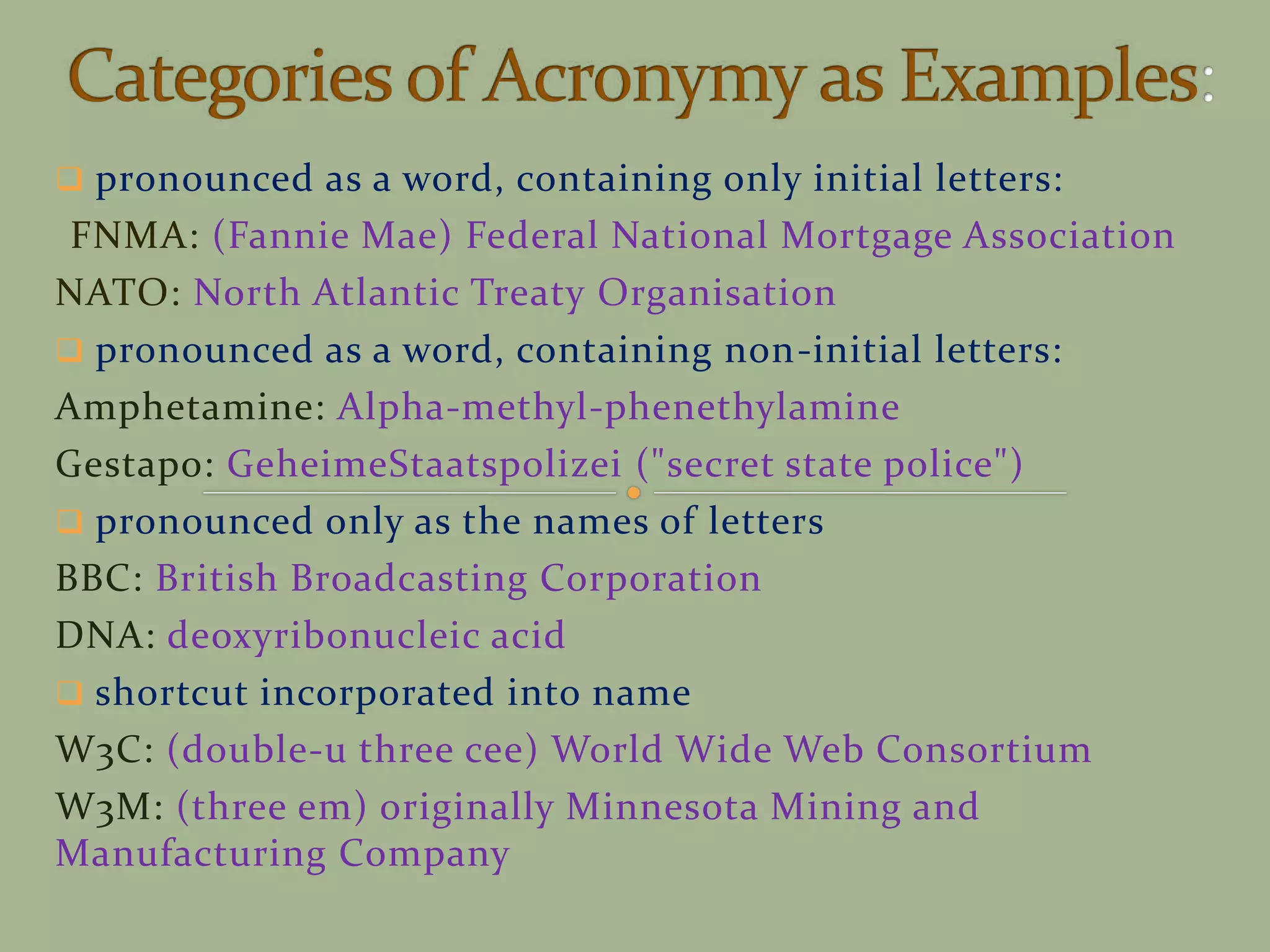
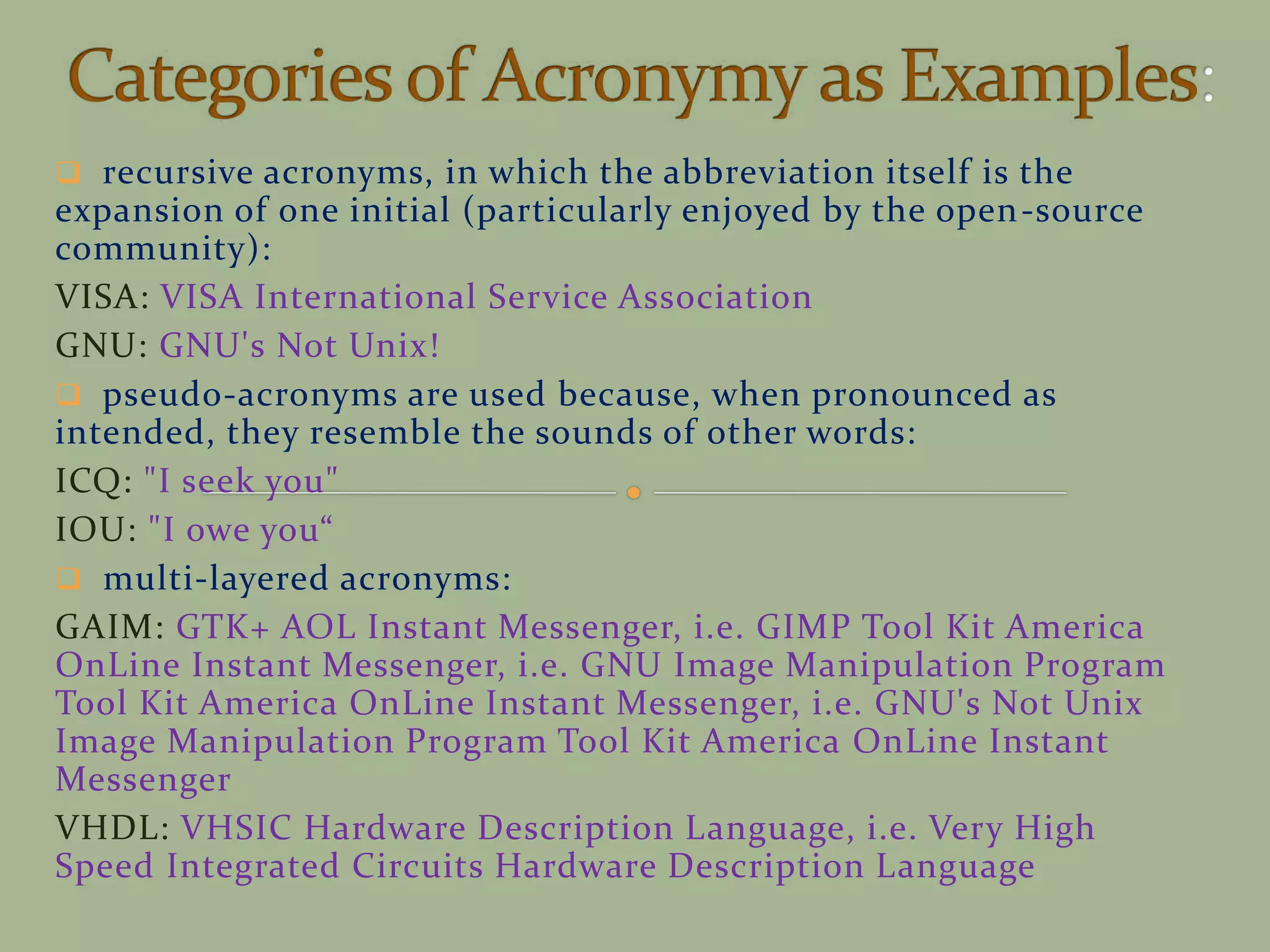
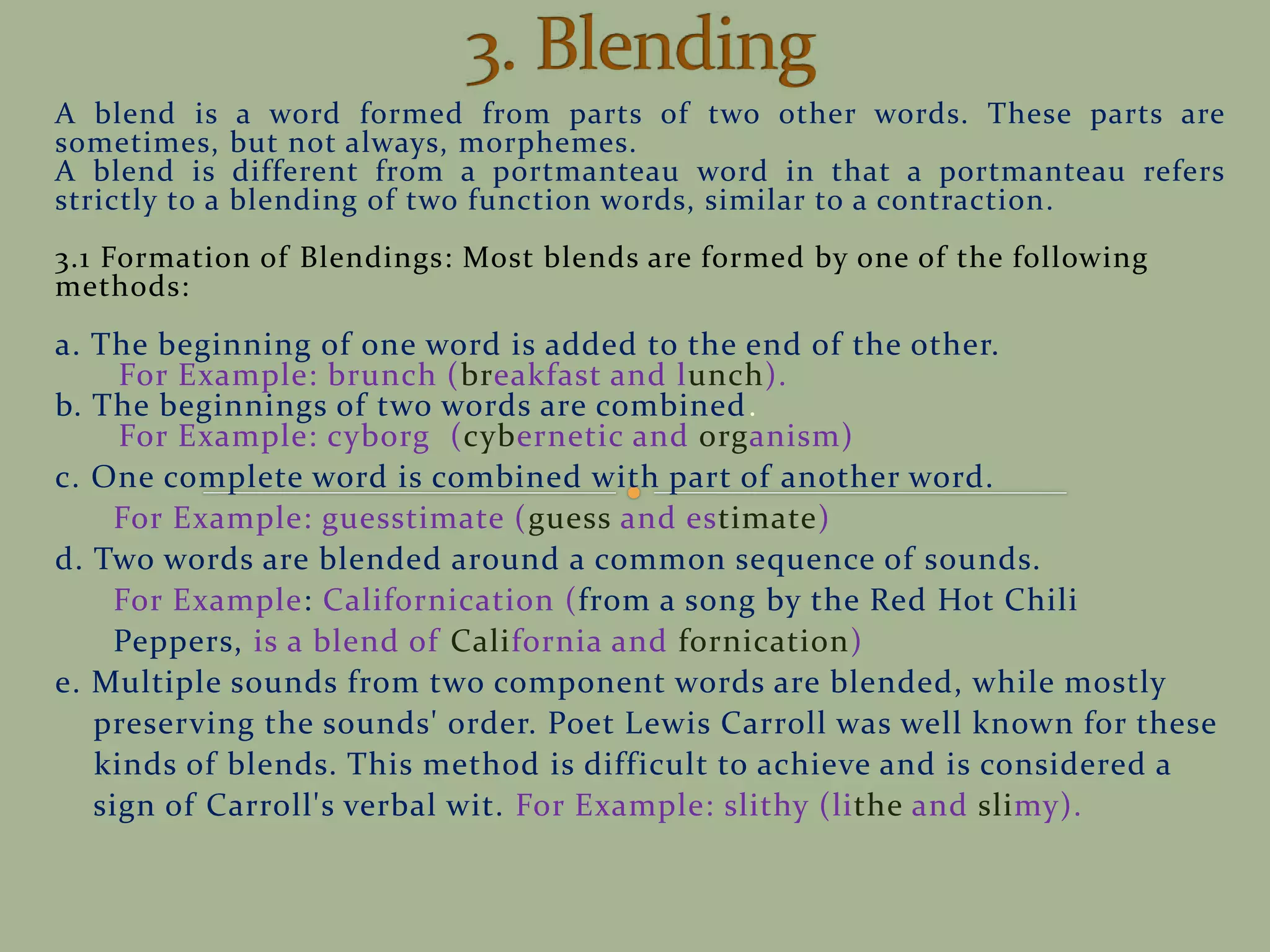
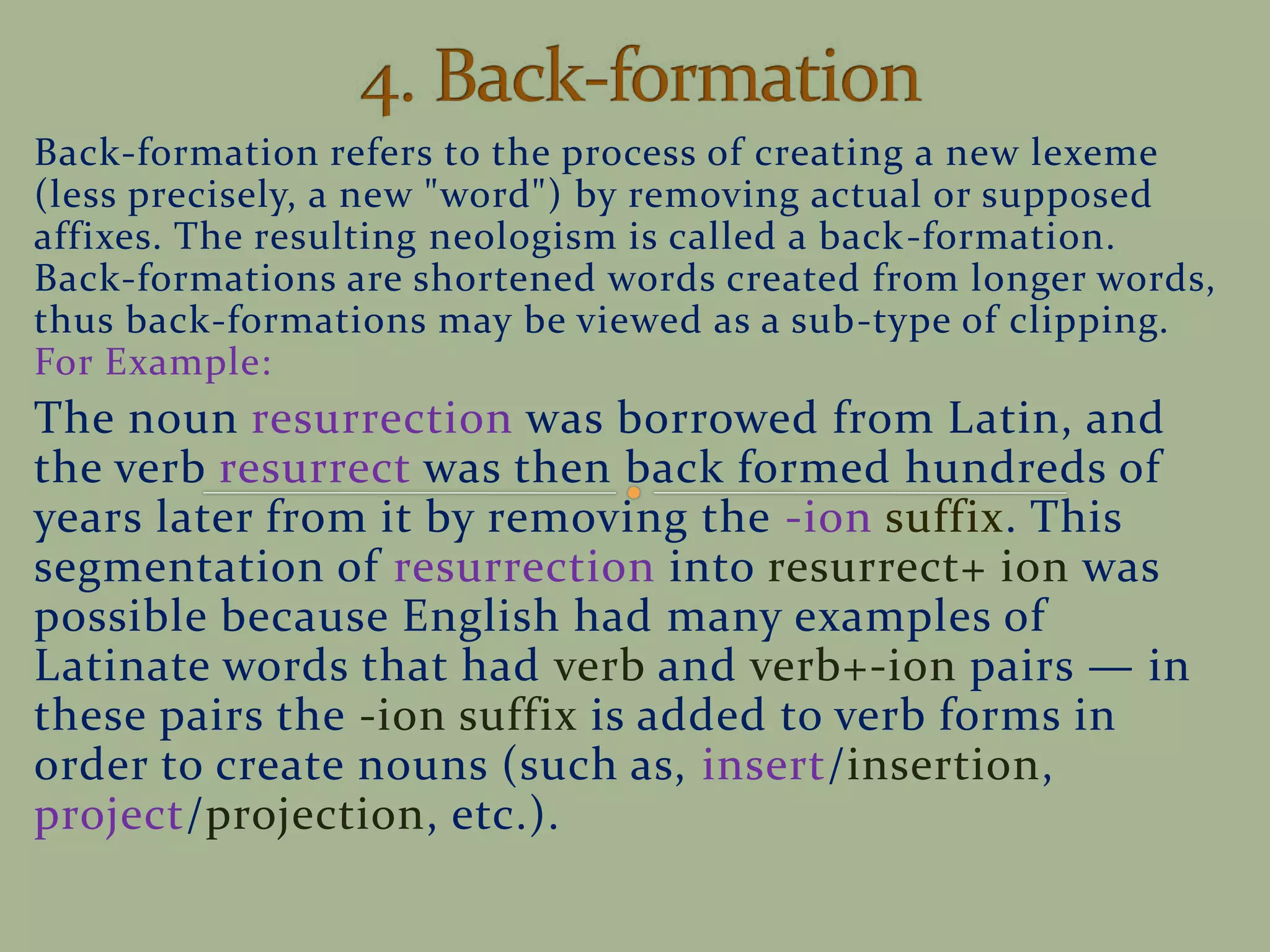
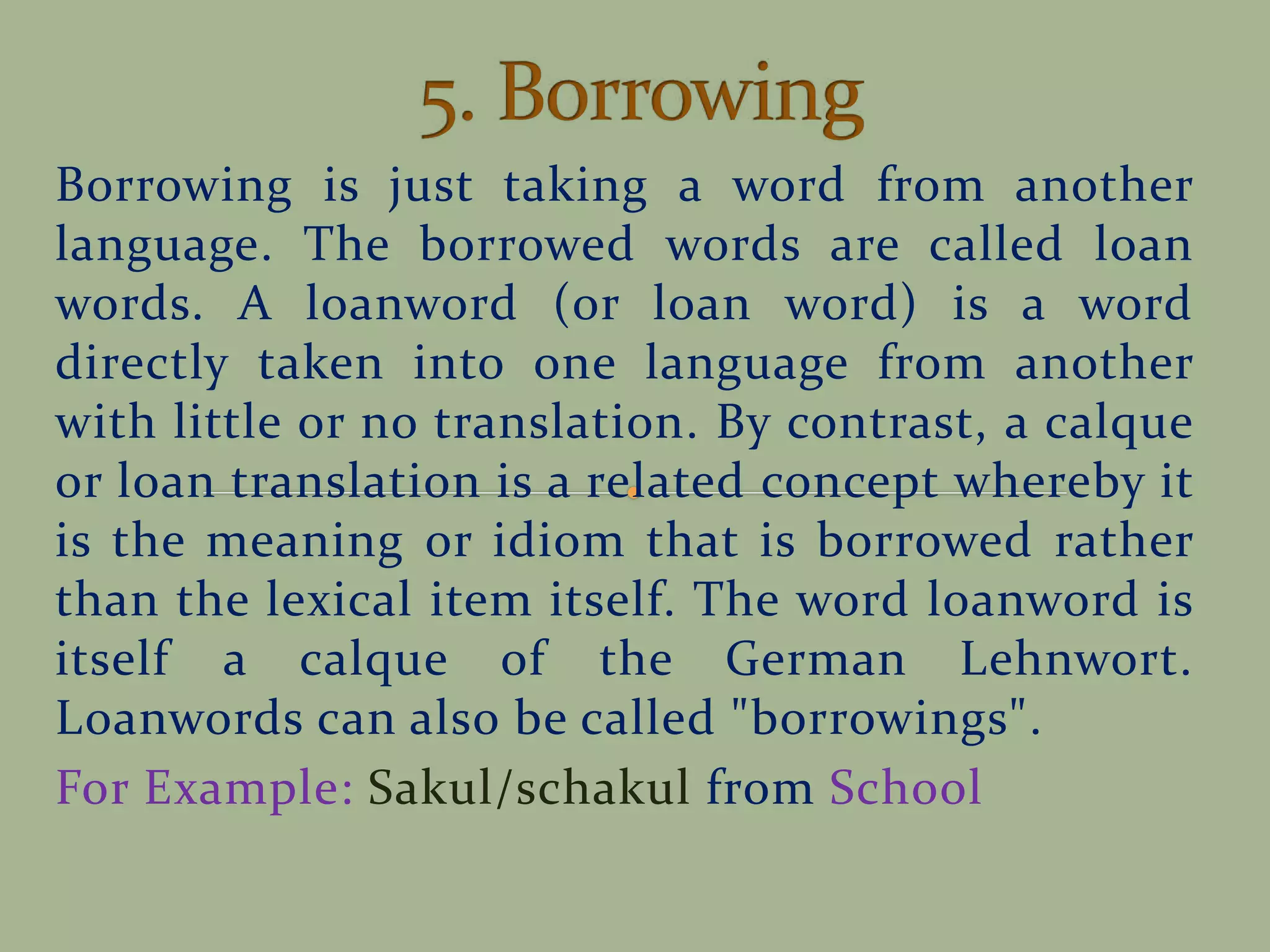
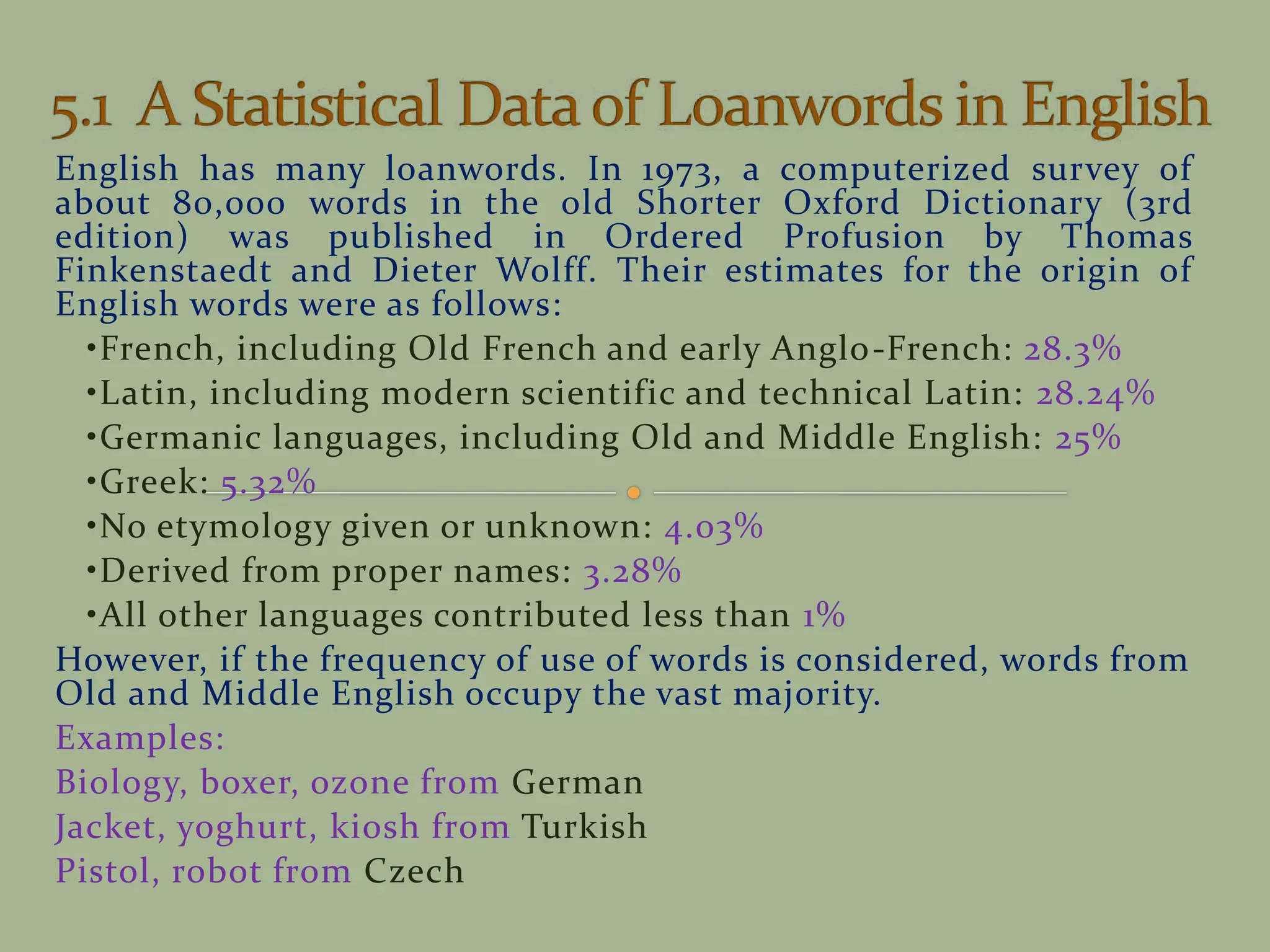
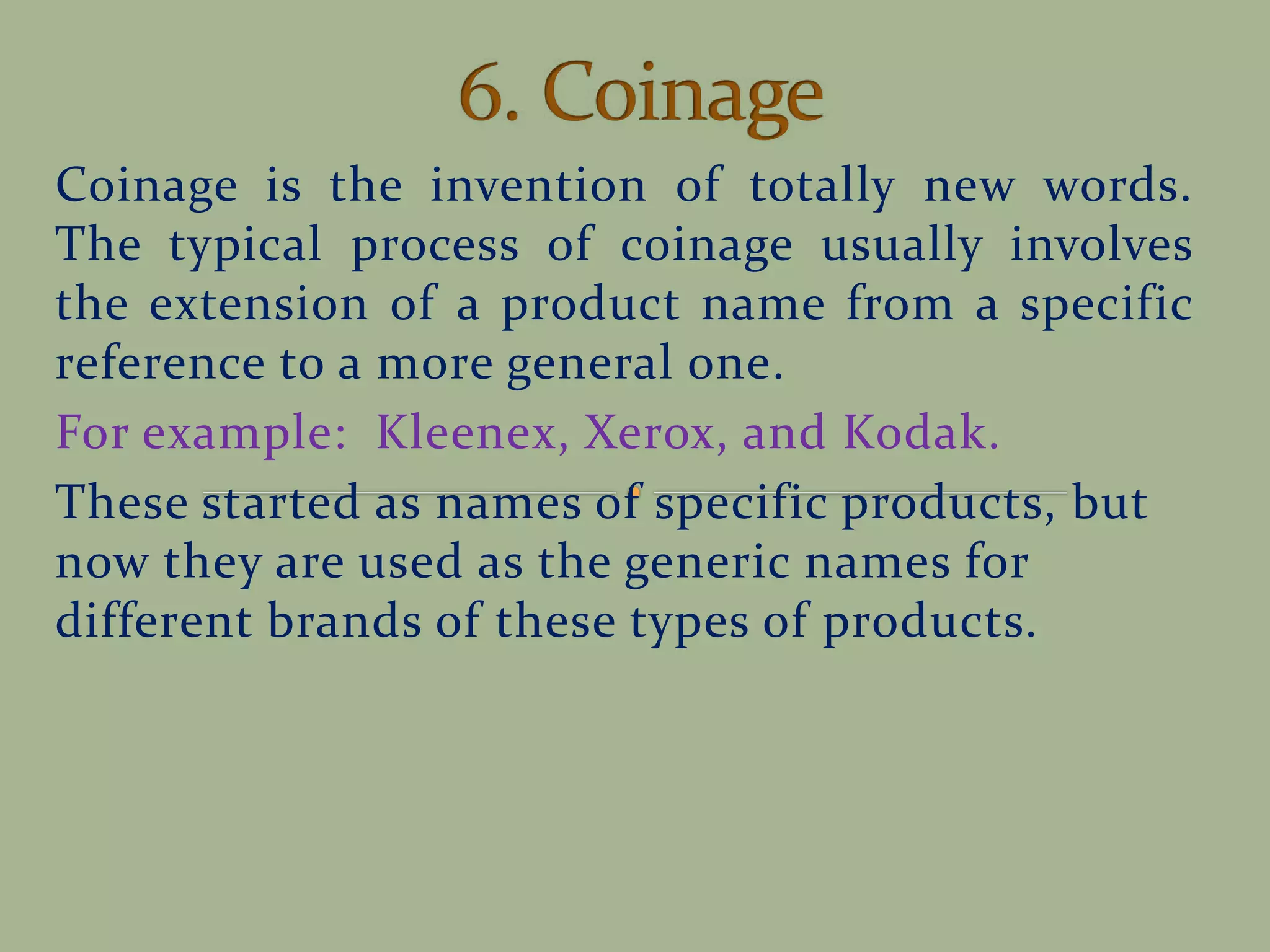
![Process of forming new words either by doubling an entire word
(total reduplication) or part of a word (partial reduplication).
English makes use of reduplication very sporadically (rarely). Total
reduplication is extremely rare!
Full and partial reduplication
Full reduplication involves a reduplication of the entire word. For
example, Kham derives reciprocal forms from reflexive forms by
total reduplication:
[ɡin]'ourselves'→[ɡinɡin]'we (to) us'(ɡin-ɡin) [jaː]'themselves'→[jaːjaː]'they (to)
them'(jaː-jaː)(Watters 2002).
Partial reduplication involves a reduplication of only part of the word. For
example, Marshallese forms words meaning 'to wear X' by reduplicating
the last consonant-vowel-consonant (CVC) sequence of a base,
i.e. base+CVC:
kagir 'belt'→kagirgir 'to wear a belt (kagir-gir) takin 'sock'→takinkin 'to wear
socks (takin-kin)(Moravsik 1978).
English partial reduplication: Example: Humpty – Dumpty, Hocus - Pocus,](https://image.slidesharecdn.com/wordformationprocess-230503064351-89df8e5a/75/WORD_FORMATION_PROCESS-pdf-17-2048.jpg)

